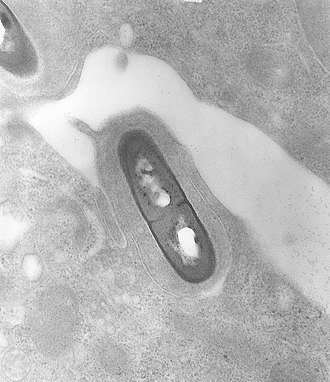Table of Contents
Introduction:
Listeriosis is a condition caused by infection with Listeria monocytogenes. Stereomonocytogenes is a gram-positive bacterium, which means it is rod-shaped. The prevalence of Listeria monocytogenes infection and literiosis has decreased over the past several decades because of improved sanitation practices, with several foodborne outbreaks occurring in the 1980s. But for the most part, the number of infections is falling.
However, we still see occasional small outbreaks, and we know that infections are becoming more common and causing more severe disease, especially in the patient population, than is actually the case with foodborne illness. It is the third leading cause of death. So some other important facts about listeria monocytogenes include that there are 13 serotypes with three capable of infecting humans. These are the three as we mentioned earlier it is gram positive bacteria and it has a rod shape. It is gram positive but is also a facultative intracellular aerobic bacterium.


Those terms mean that it is a intracellular. meaning that it can get inside of host cells. but its facultative meaning that it does not have to be inside the host cell it can be both outside or inside. it can live Either inside or outside host cell and its aerobic meaning that it requires oxygen. some other important factors with regard to this bacteria is that it’s able to reproduce at very low temperature.
Now this is very different than most other bacteria. Where they can actually slow down reproduction at lower temperatures. But these ones can actually maintain a high reproductive rate even at lower temperatures including temperatures of refrigeration. so at one to four degrees Celsius they can still reproduce at significant levels.
And another important factor is, with regards to infection is that oftentimes larger numbers of organisms are required to cause the infection. but because they can still produce even when they’re refrigerated oftentimes is not an issue. there’s going to be so many organisms say for instance in refrigerated food. That they can still cause infection and we’ll talk about what types of foods are more likely to be contaminated by this bacteria now where these organisms.
Actually these organisms come from most of the time infection is going to be via fecal oral root. meaning that a patient is infected and then its spreaded throw there faces into the environment and due to contamination improper hygiene or unsanitary conditions. other individuals can pick this bacteria up in a particular contaminated food. and then they get infected and it goes back into their gastrointestinal system and then the cycle continuous.
Sources pathophysiology:
Contaminated Food:
Some of these include the following:
Processed Meats Deli Meats, Hot Dogs and Raw/Undercooked Meats:
Because we had mentioned before this bacteria can survive and reproduce in refrigerated or low temperature environment. having meat in the fridge and then trying to cook it but not cooking it enough can be a source of this bacteria.
Unpasteurized Dairy products:
Like Milk, Soft Cheese. Unwashed Raw Vegetables and Smoked Seafood
Trans placentally:
Now consumption of contaminated food products is not the only way humans can be infected by Listeria. They can also be infected trans placentally.
- Across the placenta so the fetus can be infected by this during pregnancy in the newborn or neonates.
- Rupturing of amniotic membranes
- During vaginal delivery
Virulence Factors:
Now let’s talk about the Pathophysiology and the virulence factors that Listeria uses to infect individuals. When a patient first consumes this bacteria in a contaminated food products the bacteria is going to go into the stomach and the stomach is going to be acidified.
- Adaptive Acid Tolerance Response(ATR)
- Internalins A and E-Cadherin are bacterial membrane protein that allow for host cell adherence
- Lysteriolysin and phosphatidylinositol specific phospholipase are used to escape from the host cell vacuole
- Actin polymerization (ActA) for intracellular motility (Tumbling Motility)
Sign and Symptoms in Immunocompetent Patients
Now let’s talk about the signs and symptoms of Listeriosis in immunocompetent patients. Those are going to be otherwise healthy patient with a strong or healthy immune system. Some of the signs and symptoms that can occur from a Listeria infection include these following:
- Nauseous
- Vomiting
- Diarrhea
- Fever
- Myalgias
- Malaise
- Back pain
- Headache
Special case of immunocompetent patient is a pregnant woman’s. We can see following issues with them:
- Premature Delivery
- Spontaneous Abortion
- Chorioamnionitis
- Stillbirth
Sign & Symptoms in Immunocompromised Population
These patients have HIV or Aids or are on some immunosuppressive medication. They are the extremes of age very young very old and other patients who are diabetics as well. All these issues are going to have to do with suppressed T cell immunity. These symptoms are following:
Meningitis
- Headache, Stiff neck
- Positive Brudzinski’s sign and Kernig’s sign
The Positive Brzezinski sign in a positive kerning sign so Brzezinski sign is where you have the patient lay down supine and you Flex her neck and they are going to flex their hips and knees to compensate for that pressure within their central nervous system. So they can experience a stiff neck some pain and a reflex of flexing their hips and knees. where as the kerning sign is where the patients going to lay down flat the clinician is going to flex their hip and their knees and then the clinician is going to extend their need.
Encephalitis
- Fever, Headache, Confusion (altered mental status)
Sepsis
Sepsis most commonly in “Neonates <5 days old”. Specially with Neonates we can see following issues:
- Granulomatosis
- Infantiseptica
- Abscesses & Granulomas
- Spontaneous Abortion
Diagnosis & Prevention of Listeriosis
Diagnosis:
First we will talk about “Diagnosis” of Listeriosis. They are following:
- Bacterial culture from blood samples
- cerebrospinal fluid ( CSF)
- placental fluids
Preventions:
• Prevention through hand washing, avoidance of contaminated foods
• Washing vegetables
• Cooking to at least 63-74C (145-165F)
Treatments of Listeriosis:
Self limited infection in immunocompetent
Antibiotics Treatments
- IV ampicillin or Penicillin G
- Septra ( Trimethoprim Sulfamethaxole) for patients with Penicillin allergy
- Ceftriaxone can be added to combat other causes of meningitis
- Gentamicin for additional gram negative coverage ( especially in infants)
- Vancomycin for MRSA coverage or methicillin resistant staphylococcus aureus
Neonates:
Ampicillin plus gentamicin
(Ampicillin can be used as long as the patient doesn’t have an allergy to penicillin and then gentamicin can be used in addition to that to increase the gram negative coverage)
Immunocompromised Adults or Older than 50:
- Ampicillin plus ceftriaxone plus vancomycin
(Ampicillin can be used plus after axons plus vancomycin
Listeria Outbreaks In USA
Listeria is a dangerous bacteria. It spread its alarming terror in America in the form of various epidemics. Some of the major Listeria outbreaks and their effects are detailed below:
2011 Cantaloupe Outbreaks:
Serious Listeria outbreaks have occurred before 2011. The history of this epidemic has been reported around the world for many years. In 2011, the largest outbreak of Listeria occurred in the cantaloupe of Jensen Farmers in the United States. This epidemic spread very quickly in America and made its terror everywhere. This epidemic had shaken the health institutions in all the people by failing in all their efforts.147 people were seriously affected in the 2011 Listeria outbreak. While 33 people lost their lives due to this dangerous bacteria. A miscarriage also occurred in this dangerous bacteria. The epidemic took away the joy of many homes in 2011.
2014 Caramel Apple Outbreaks:
The 2014 caramel apple outbreak was unexpectedly caused by Listeria contamination in food. An outbreak of Listeria-tainted caramel apple food infected 135 people in 12 states. While 7 deaths occurred. This outbreak proved that even pre-packaged foods are not immune to Listeria bacteria. After that, efforts were made to improve food safety and food processing methods.
2015 Blue Bell Ice cream Outbreaks
The 2015 Bluebell Ice Cream outbreak affected 10 people in 4 states. While 3 deaths were reported. The outbreak spread despite all food safety measures. Due to the outbreak, the Blue Bell Ice Cream Company recalled all Blue Bell products nationally. Due to which the Blue Bell Company suffered a lot. After the outbreak, all companies were heavily criticized for their cleaning procedures and urged to improve their cleaning procedures.
2019 Enoki Mushrooms Outbreaks:
In 2019, an outbreak of enoki mushrooms imported from South Korea infected 36 people in 17 states. 4 people died. The outbreak alerted all public health agencies. And stressed that fortified foods should always be offered to the general public after expert testing.
About Author
I’m Ayesha Iqbal, a student studying MBBS at Services Institute of Medical Sciences (SIMS) Lahore. I write about health for “GenZ Cares” because they care a lot about young people staying healthy. I do research and try new things to learn more about how to keep everyone feeling good. My articles focus on topics like nutrition, exercise, mental well-being, and ways to lead a healthier lifestyle. Through my writing, I aim to share valuable insights and practical tips that can make a positive difference in people’s lives.
Reviewed By

This article is reviewed by “NASHIT ALIYAN“, a certified Surgical Technologist from Government College University Faisalabad under section 2017-2021. I am 17A medical officer as well as Strategic and financial planning expert and Proficient in surgical field. Me and my team use the latest technology to perform complex surgical procedures. I recommend to “GenZ Cares” because they are really hardworking in their work and care a lot about youth to staying healthy.

I visit each day some blogs and blogs to
read articles, but this website gives quality based posts.